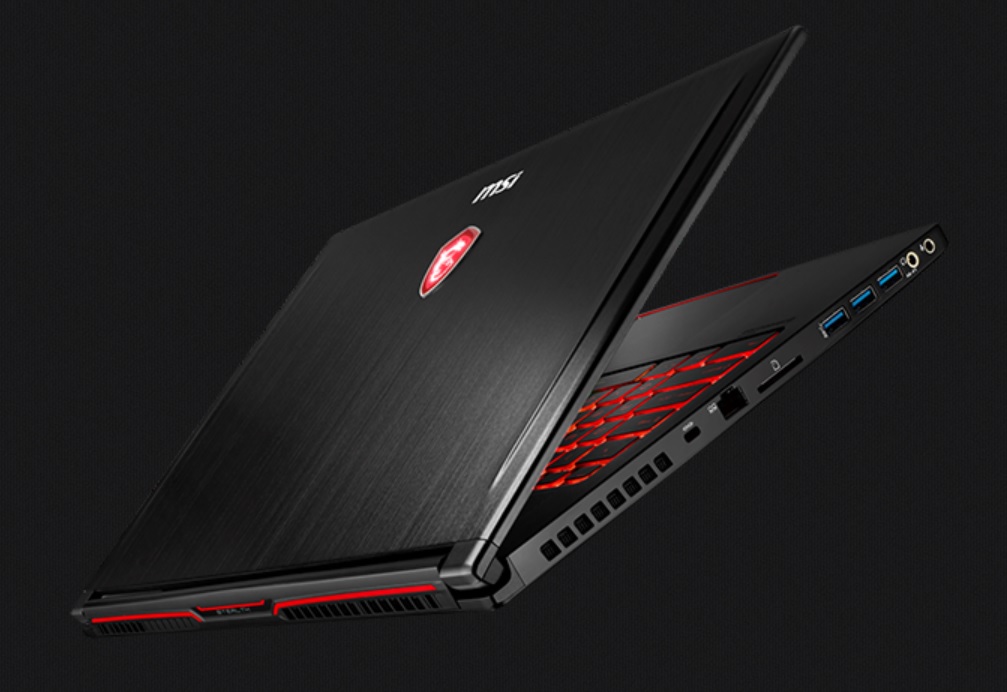MSI Reveals New GS63 Stealth Gaming Laptop With GTX 1050 Onboard

MSI announced that its ultra-slim GS63 gaming laptop would now be available with GeForce GTX 1050 graphics onboard. The GS63 7RD Stealth drops the “VR” connotation of the previous models, with MSI aiming to make the thin-and-light notebook more affordable with a GPU that isn’t quite VR ready, but can still offer enjoyable framerates in the latest games at 1080p.
The MSI GS63 7RD Stealth features an Intel Core i7-7700HQ processor and an Nvidia GeForce GTX 1050 2GB graphics card, in addition to a 15.6” FHD (1920 x 1080) IPS display rated for 100% sRGB color accuracy. Memory and storage capacities and combinations will vary, but the GS63 7RD Stealth can be equipped with up to 32GB (2 x 16GB) of DDR4-2400 memory, and it has room for a single 2.5” HDD or SSD and an M.2 slot for PCIe NVMe or SATA SSDs.
The new GS63 sports a three USB 3.0 and a USB 2.0 port, in addition to a USB 3.1 Type-C port with support for Thunderbolt 3 (display output). You can also connect an additional display with an HDMI 1.4 or mini DisplayPort interface, and internet connectivity is provided by a Killer E2400 gigabit Ethernet port and Killer N1535 802.11ac Wi-Fi (Killer Double Shot Pro).
The GS63 7RD Stealth features the same SteelSeries full color backlit keyboard and dimensions as its predecessor, measuring in at 14.96 x 9.8 x 0.69"and weighing the same 3.96 bs. However, the 4-cell battery inside the new GS63 is an upgrade from the previous version, which had a 3-cell battery, and the less-powerful GPU also allows for a 150W power adapter instead of the former’s 180W adapter.
Pricing and availability for the new GTX 1050-equipped MSI GS63 7RD Stealth is not yet known.
| Product | MSI GS63 7RD Stealth |
|---|---|
| Processor | Intel Core i7-7700HQ |
| Memory | Up to 32GB (2 x 16GB) DDR4-2400 |
| Graphics | Nvidia GeForce GTX 1050 2GB GDDR5 |
| Display | 15.6” 1920 x 1080 IPS |
| Storage Capacity | - 2.5” HDD- M.2 SSD (PCIe x4 or SATA) |
| Ports | - USB 3.1 Type-C- USB 3.0 x3- USB 2.0- Card Reader |
| Display Output | - HDMI 1.4- Mini DisplayPort 1.2- Thunderbolt 3 (USB Type-C) |
| Networking | Killer Double Shot Pro with Killer Shield |
| Battery/Power Adapter | 4-Cell/150W |
| Dimensions | 14.96 x 9.8 x 0.69" |
| Weight | 3.96lbs |
Stay On the Cutting Edge: Get the Tom's Hardware Newsletter
Get Tom's Hardware's best news and in-depth reviews, straight to your inbox.
-
AgentLozen I don't know if a 1060 would fit the price target MSI has with this thing. Typically 1060 laptops are $1000+ (a conservative estimate). I do agree with you about better performance. This laptop would be more desirable if it were sporting more hardware power.Reply
I hesitate from buying a laptop like this because I feel like we're only a few months from a complete hardware revision. Replacing current generation technology with Coffee Lake and Nvidia Volta would make a whole world of difference. I would hate to drop of bunch of money on this thing and regret my decision by early 2018.
I don't mean to discourage someone from buying this thing. The hardware that's mentioned in this article is still very capable if you're not a serious gamer. The form-factor and weight are right too. -
dstarr3 Well, I feel like it's a bit of a mismatch. An i5 would be a better pairing with a 1050, I think. And it'd help them even better target their price point. Meanwhile, I'd gladly pay another... $100, $150 for a 1060/i7 on board. All the other 1060 laptops I've seen recently have 4K screens, which is pointless. A 1060 can't push 4K on any slightly demanding game. If you have to pixel-double with the thing, may as well save the money and just equip it with a 1080p screen. But no one does.Reply -
AgentLozen I've noticed the trend of mismatched hardware. You mentioned like a SUPER HIGH RESOLUTION display paired with a 1060.Reply
But I've also seen:
A $2000 HIGH END GAMING MONSTER MACHINE with a 128GB SSD + 1TB Hard Drive.
Or a $600 SUPER MODEST laptop with 32GB of ram.
Or a GTX 1080 paired with a 1080p display.
Not every laptop is guilty of these wild mismatches, but there are an upsetting number of them that are. Usually the engineers who design the specs for companies with MSI, ASUS, Gigabyte, etc are really smart dudes. How is it that we get these weird pairings?
